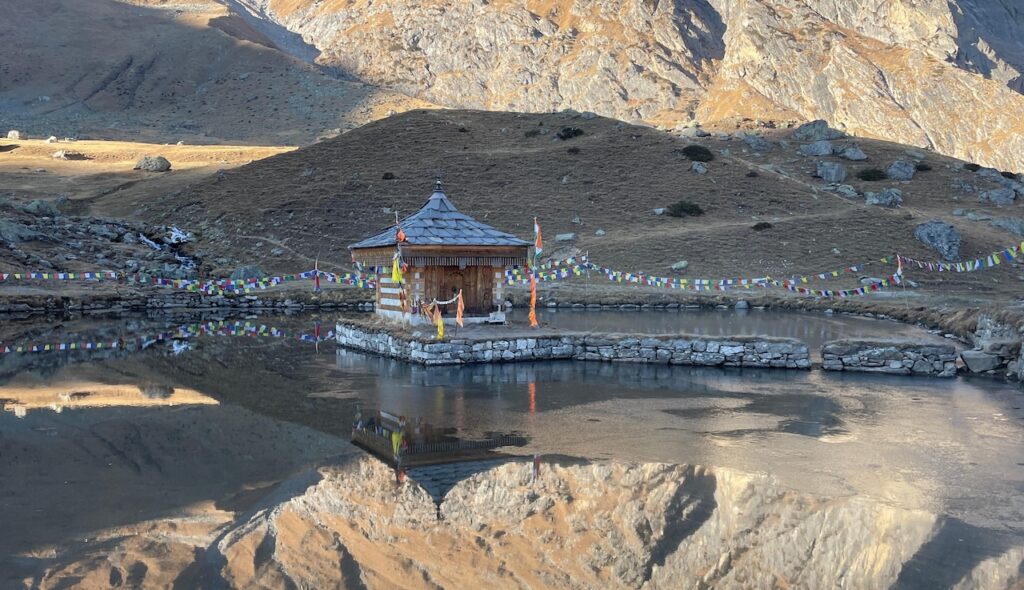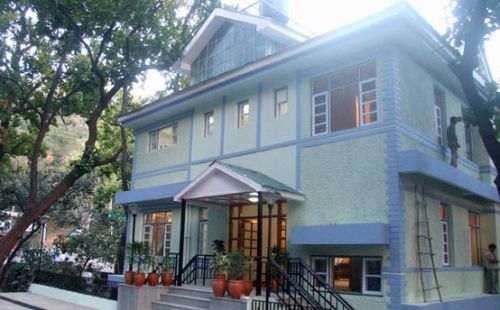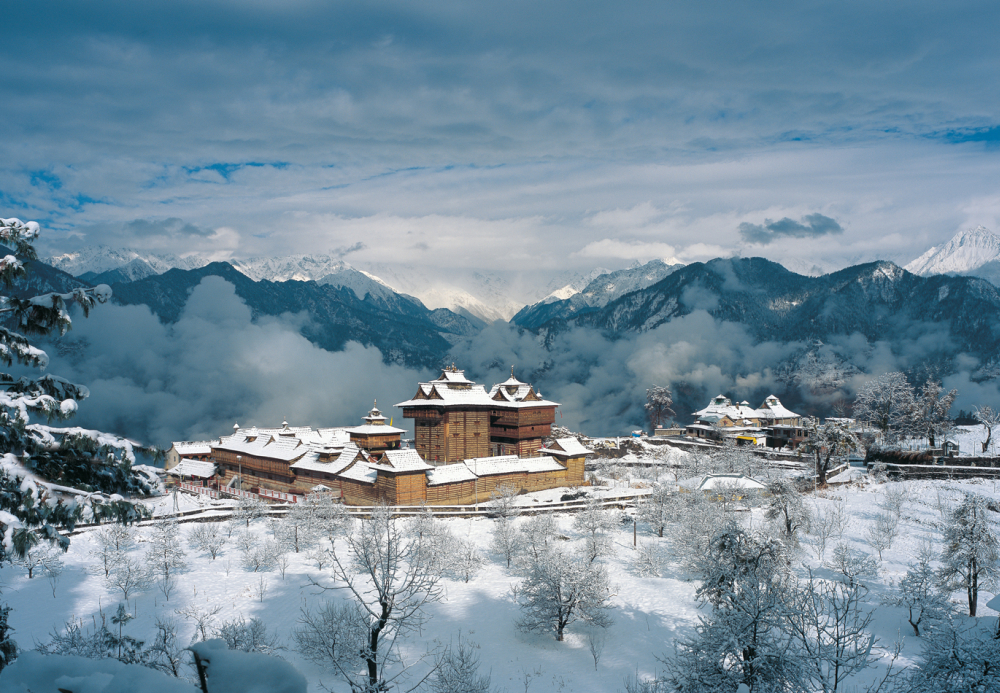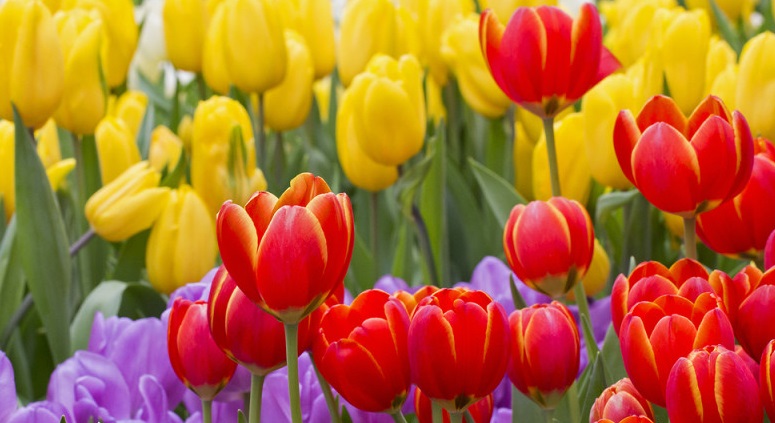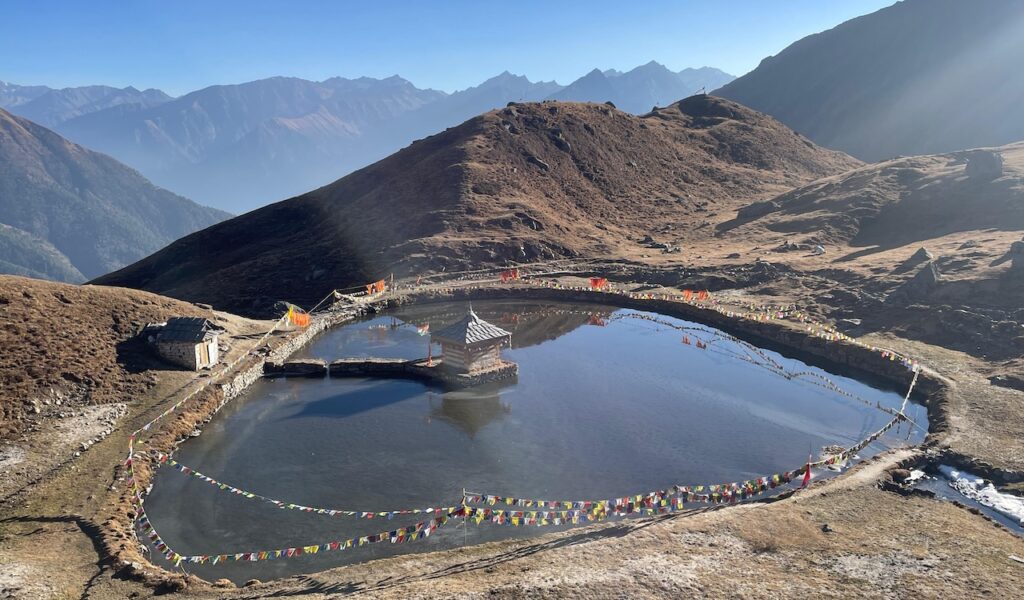
Pilgrimages in Himachal Pradesh often take you far from the hustle and bustle of human civilization. These journeys transform one’s thoughts, ideas, and wisdom, leaving a profound impact on the body and soul. You may not begin with questions, but by the end, you will surely find answers.
One such pilgrimage is the trek to Yulla Kanda, home to the world’s highest Lord Krishna temple. Perched atop a hill at an altitude of 12,000 feet, the temple is surrounded by a serene pond and snow-capped peaks. The journey to this sacred site begins at Yulla village in Kinnaur, located approximately 200 kilometers from Shimla.
Reaching Yulla village is itself an adventure. The last motorable point, Yulla Bus Stand, can be accessed by bus, taxi, or personal vehicle. Here, the villagers welcome travelers with warm hospitality, offering simple yet delicious meals and cozy accommodations.
The trek from Yulla village to the temple spans 10 kilometers, starting with a gentle ascent through the last inhabited house in the area. As I began my climb, the dense forest of Himalayan cedar trees soon enveloped me. The cool breeze carried the refreshing aroma of deodars, making me feel far removed from the trappings of daily life.
Fellow trekkers descending the path greeted me with cheerful cries of “Jai Shree Krishna.” Their energy was contagious, and soon I found myself chanting the phrase, adding a spiritual rhythm to my steps. Four kilometers into the trek, a gate marked “Welcome to Yulla Kanda” signaled a transition. The lush cedar forest gave way to barren hills, where Base 1 offered an ideal spot to rest and take in the scenery.
Another two kilometers led to Base 2, a campsite managed by a dedicated group of young villagers. Here, trekkers can rent tents for ₹1,200 per person, which includes meals and a warm, hospitable environment. Occasionally, a bonfire adds to the charm, though the camp managers limit them to protect the forest. Their respect for nature stood out, especially in such a remote location where temperatures dropped to -12°C at night.
From Base 2, the temple came into view, perched on the summit of a steep incline. The final two kilometers were a challenging 70° climb, demanding strength and focus. As I neared the top, the sound of water flowing from the pond signaled that the temple was close.
The sight that greeted me was nothing short of magical. The temple, surrounded by fluttering Tibetan prayer flags, stood beside a crystal-clear pond reflecting the snow-capped peaks. The atmosphere was charged with serenity and devotion. According to legend, the Pandavas built this temple during their exile. Centuries later, a shepherd discovered the Krishna idol, prompting the villagers to construct a shrine. For its safety, the idol was later relocated to a Buddha temple in Yulla village.
Inside, I joined other travellers in worshipping Lord Krishna. The air was filled with the scent of incense, and the tranquil surroundings seemed to dissolve all fatigue. The rich history of the temple and the divine energy of the place created a deeply moving experience.
After spending two hours at the temple, I began my descent to Base 2. That evening, the campsite buzzed with stories shared around a small bonfire. Most trekkers, like me, had come seeking adventure, but they also discovered a spiritual connection they hadn’t anticipated.
The night was bitterly cold, but the sunrise the next morning was a spectacle that made it all worthwhile. At 7:45 a.m., the first rays of light illuminated the peaks, casting a golden glow on the landscape.
As I descended to Yulla village, I exchanged greetings with ascending travellers, passing on the same “Jai Shree Krishna” that had uplifted me. The trek to Yulla Kanda was not just an adventure; it was a soulful journey that left me with lasting memories and a renewed sense of purpose.


